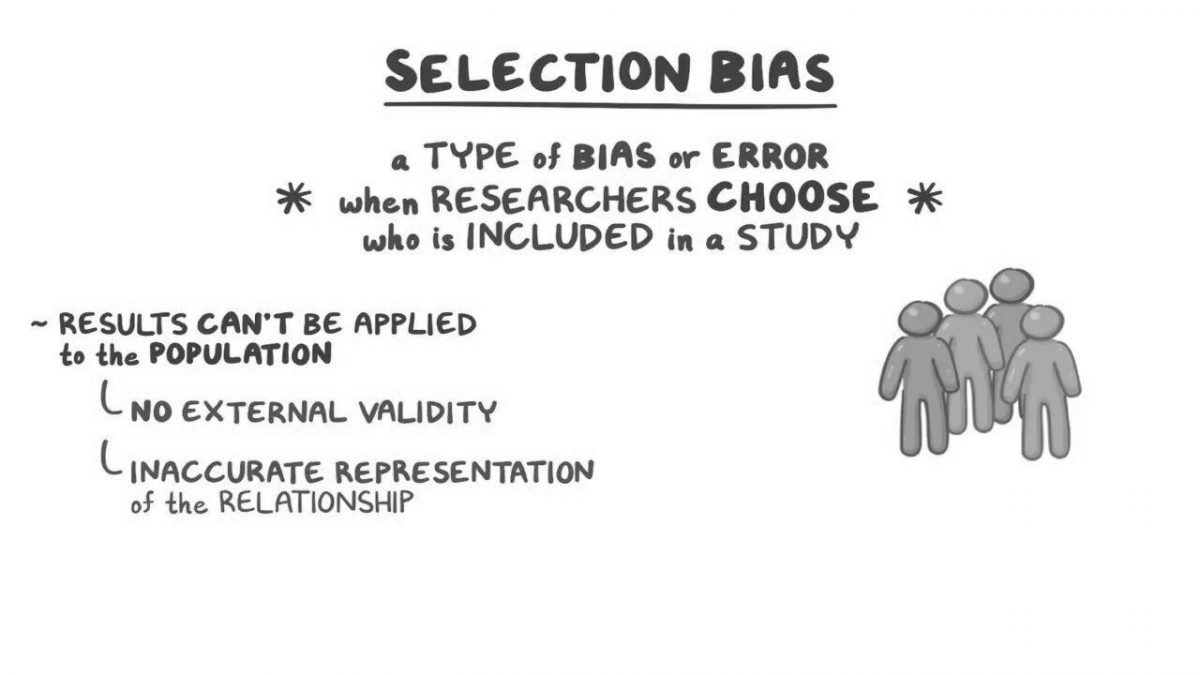Introduction
In the realm of decision-making, our minds can play tricks on us, leading to biased and flawed judgments. One mental model that sheds light on this phenomenon is Selection Bias. This bias occurs when we draw conclusions or make decisions based on a non-representative sample of data, inadvertently excluding certain individuals or factors from consideration. The relevance of Selection Bias in decision-making processes is profound, as it can distort our understanding of reality and lead to irrational choices. In this blog post, we will explore the concept of Selection Bias, its anchoring in human psychology, its prevalence in our daily lives, and the detrimental consequences of falling prey to this fallacy.
Selection Bias in Decision-Making
Selection Bias is highly relevant in decision-making as it skews our perception of reality and impedes objective analysis. It arises when we unintentionally select or focus on a particular subset of data that is not representative of the entire population or situation. This bias undermines the accuracy and validity of our decision-making process, leading to flawed outcomes.
Anchoring in Human Psychology and Prevalence in Daily Life
Selection Bias is rooted in various cognitive biases and psychological mechanisms that influence our thinking:
- Confirmation bias: This bias refers to our tendency to seek, interpret, and remember information that confirms our pre-existing beliefs or hypotheses. In the context of Selection Bias, confirmation bias leads us to selectively gather and focus on information that aligns with our preconceived notions, excluding contradictory evidence or perspectives.
- Availability heuristic: This bias occurs when we rely on easily accessible information to make judgments. In the context of Selection Bias, we may rely on information that is readily available or comes to mind easily, without considering its representativeness or the potential information that is missing.
- Anchoring bias: This bias refers to our tendency to rely too heavily on the initial piece of information encountered when making decisions. In the case of Selection Bias, the initial data or sample we encounter can become the anchor upon which we base our judgments, leading us to disregard other relevant information.
Examples of Selection Bias in Context
- Personal Life Decisions: Consider an individual searching for a new job. If they solely rely on the opinions and experiences of a small group of friends who have had negative experiences in a particular industry, they may develop a negative perception of the industry as a whole. By neglecting to gather a representative sample of information, they make a biased decision that excludes potential opportunities and limits their career prospects.
- Business Scenarios: In business, Selection Bias can lead to misguided decisions. For instance, if a company conducts market research by surveying only their loyal customers, they may fail to consider the needs and preferences of potential new customers. By relying on a biased sample, the company risks developing products or services that cater only to a narrow segment of the market, missing out on broader customer segments and growth opportunities.
- Public Policy-Making: Selection Bias can have significant implications in public policy-making. If policymakers base their decisions on anecdotal evidence or select a small, non-representative group for consultation, they may overlook the diverse needs and perspectives of the entire population. This can lead to policies that disproportionately benefit certain groups or fail to address the broader societal context.
Mental Biases Contributing to Selection Bias
Apart from the biases mentioned earlier, other psychological factors contribute to the prevalence of Selection Bias
- Social influence: Our decisions are often influenced by the opinions and actions of others. If we observe influential individuals or groups focusing on specific information or perspectives, we may be inclined to adopt a similar approach, inadvertently falling into Selection Bias.
- Cognitive dissonance: When faced with conflicting information or choices, we experience cognitive dissonance, a discomfort caused by holding contradictory beliefs or making inconsistent decisions. To alleviate this discomfort, we may selectively choose information or samples that support our existing beliefs, reinforcing Selection Bias.
- Overgeneralization: Our minds tend to simplify complex information to make sense of the world. This simplification can lead to overgeneralization, where we draw broad conclusions based on limited or biased information, perpetuating Selection Bias.
Identifying and Avoiding Selection Bias
To mitigate Selection Bias and improve decision-making, individuals can employ the following strategies:
- Actively seek diverse perspectives: Engage with a wide range of individuals and sources of information. Seek out diverse opinions, experiences, and data that represent a broad spectrum of views and perspectives. This approach helps counteract the tendency to focus on a limited subset of information.
- Question your assumptions: Be mindful of your own biases and preconceived notions. Continuously question your initial judgments and beliefs, challenging yourself to consider alternative viewpoints and evidence that may contradict your initial stance.
- Conduct randomized sampling: In research or data analysis, ensure that you use randomized sampling techniques to gather representative data. Random sampling helps minimize the risk of selecting a biased sample and ensures that your conclusions are more accurate and reliable.
- Consider contradictory evidence: Actively seek out information that challenges your existing beliefs or hypotheses. Give due consideration to dissenting opinions and information that may contradict your initial expectations. This approach promotes a more comprehensive and balanced understanding of the situation.
Conclusion
Selection Bias is a pervasive mental trap that can significantly impact decision-making processes. By excluding relevant information or selectively focusing on biased samples, we compromise the objectivity and validity of our choices. Being aware of the psychological underpinnings, biases, and prevalence of Selection Bias empowers us to make more informed and rational decisions. By actively seeking diverse perspectives, questioning our assumptions, and using proper sampling techniques, we can avoid falling into this mental trap. Mitigating Selection Bias enhances the accuracy and quality of our decision-making, leading to more favorable outcomes in personal, professional, and public spheres. Embrace the value of awareness and actively work towards overcoming Selection Bias, and you will unlock the potential for wiser and more effective decision-making.
